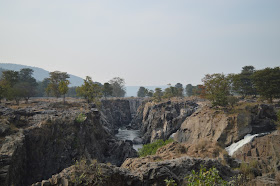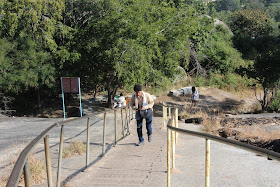Hogenakal is framed of two Kannada words hoge and kal. At the point when the water falls on the stones it shows up as though hoge (smoke) is radiating from the highest point of the kal (rock) on account of the power of the water, consequently Hogenakkal (smoking rocks). It is in some cases alluded to as the "Niagara of India". With its distinction for restorative showers and shroud pontoon rides, it is a noteworthy vacation destination. Carbonatite rocks in this site are thought to be the most established of its kind in South Asia and one of the most established in the world.This is additionally the site of a proposed task to create drinking water. The Kaveri is considered to shape at Talakaveri in the Brahmagiri slopes in the Western Ghats of south India and accumulates energy as the area drops in height. It gets to be bigger as different tributaries encourage into it in transit down. At Hogenakkal, the Kaveri, now a vast stream, drops and makes various waterfalls as the water slices through the rough landscape. In spots the water falls as much as 20 m (66 ft) and is said to sound like ceaseless thunder.[citation needed] Soon after the falls the waterway takes a southerly course and enters the Mettur Stanley Reservoir.
The stream conveys silt which makes the downriver arrive fertile.Boating in Hogenakkal is permitted amid the dry-season as the water falls are not sufficiently solid to upset the entry of the pontoons.
The stream conveys silt which makes the downriver arrive fertile.Boating in Hogenakkal is permitted amid the dry-season as the water falls are not sufficiently solid to upset the entry of the pontoons.























































